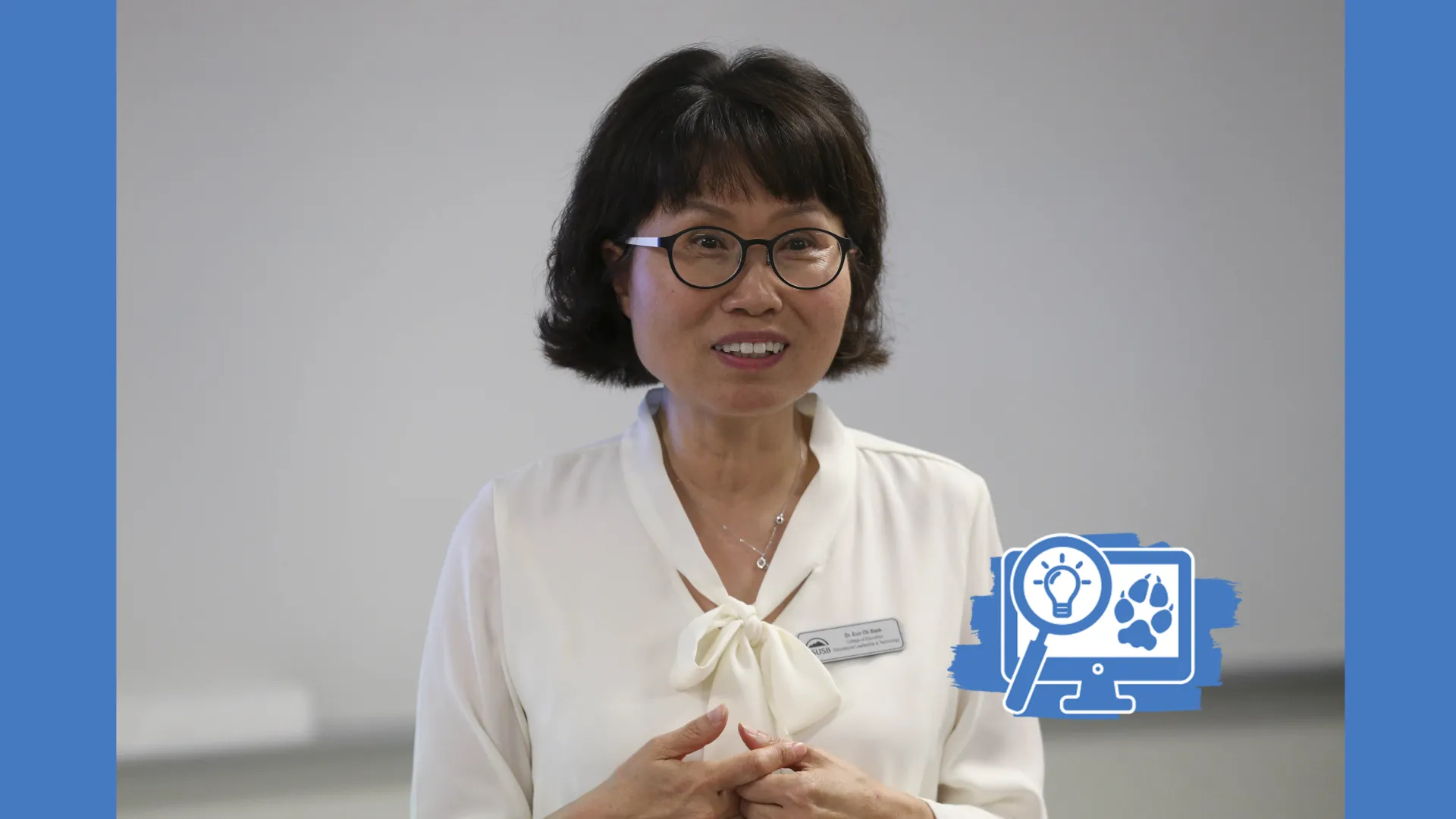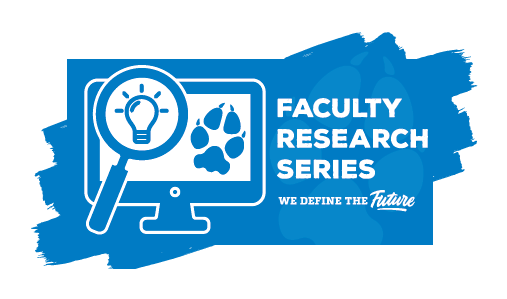Joe Gutierrez | CSUSB Office of Strategic Communication | (951) 236-4522 | joeg@csusb.edu

Editor’s note: This is part of a series of profiles of faculty and their research by Montgomery Van Wart, a professor of public administration and a CSUSB Faculty Research Fellow in Faculty Affairs and Development. In this article, he features Eun-ok Baek, a professor of education leadership and technology, and her work on various areas of online learning.
By Montgomery Van Wart
In 2020, a series of lockdowns from the COVID-19 outbreak left the education world stunned and unprepared. But that was not the case for Eun-ok Baek, a professor of education leadership and technology in CSUSB’s College of Education.
She was ready.
In fact, she was waiting. For several decades she had been researching numerous aspects of online learning. When asked when she first thought education would have a profound change because of the potential for virtualization when she finished her doctorate, she said, “I thought it would happen by 2010 or 2015 at the latest. So I have actually been surprised how long it has taken.”

Baek is an example of a researcher who studies the present in order to make the future better. This is not necessarily true for all research perspectives. Some research studies things for fundamental knowledge (pure and basic science), some study the present to understand it better, some study the past, others study values and social structures, and so on.
Baek’s research agenda has been both about applied best practices and future potentialities of instructional technology integration. It includes exploring what technology can do for the support of learning and performance, and specifically, the designing of online/mobile learning communities, technology integration in education, STEM education, and the exploration of social-cultural understandings of the adoption of technology.
She has always anticipated a radically different future for education – and she was right!
One aspect of her research agenda is to understand what makes for good online design. Some of her early tips included “align learning activities with pedagogical goals; motivate students through a real-world problem-based approach; present contents in different media formats; and embed online support in the platform or system.” Today this line of research has evolved into the study of mobile teaching/learning, a cutting-edge research area in the field.
She also studied how to build online community in virtual settings for teachers’ professional development. She examined “what are the dynamic design dualities/tensions that emerged when teachers and designers worked together to build a web-supported community of practice?”
Duality includes two distinctive concepts that are interdependent and interplay with one another continually. Design dualities emerge in purpose (school reform versus daily support), design approach (design with versus design for), social contingencies (public versus private), boundaries (inside versus outside), and usability (simple versus complex).
“Tensions emerge from the design dualities like a double-edged sword. If tensions interplay dynamically and are well-balanced in their context, then those tensions may provide new opportunities,” Baek said. “But if the tensions are not well managed, then they can be detrimental and might cause malfunctions in the system.”
Another major area has been training to improve teachers’ technology competencies. For example, in an article titled “Pre-service Teachers’ Confidence in their ISTE Technology-Competency,” Baek and her coauthors argued that “Teacher education should take the lead in equipping teaching candidates with the competencies to proficiently use instructional technology to enhance educational outcomes and to prepare students for future careers.”
Technology education curriculum needs to be designed and structured in a way to offer learning opportunities for preservice teachers, not only to develop diverse technology skills, but also to apply those skills when designing content and pedagogy-appropriate lessons. Technology integration components should be embedded, not only in the content of courses, but also in the teaching methods of courses across entire teacher preparation programs, she said.
She has covered online education from other perspectives too. In an article on e-textbooks, she recommended “The easier students perceived the e-textbook was to use, the more willing they were to take a course in which an e-textbook is required in the future … While making e-textbooks as close to print books as possible in terms of their look and feel, e-textbooks also need to differentiate themselves from their print counterparts by harnessing their virtual strengths.”
When examining the effects of online education and minority students, she pointed out the challenges related to communication skills, time management and self-discipline to complete tasks on time. Today she is currently serving as a co-director for the CSUSB Verizon Innovative Learning (VIL) for Young Men of Color grant and researching the special demands for the STEM education for minority students utilizing online platforms.
Baek talked about the challenges her colleagues have faced with the abrupt change to all online education.
“I was sad about the challenges that so many of my colleagues faced,” Baek said. “But I was overjoyed when I saw that they got much better teaching online in a relatively short period of time.”
She added how the crisis had changed her own teaching.
“Well, one change is that I no longer need to spend time trying to convince my students about the importance of technology and online education – they already know it!”